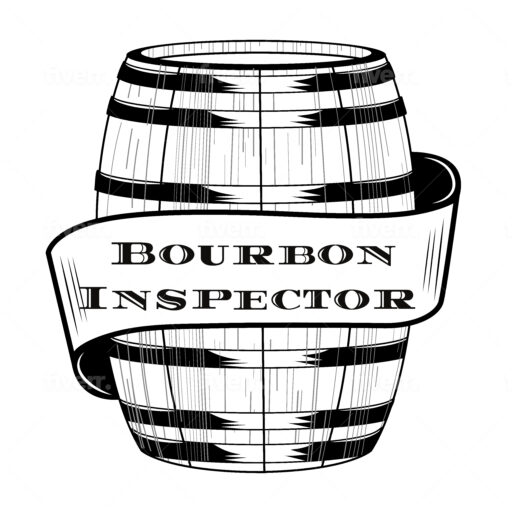Confused about the difference between bourbon and whiskey?
You aren’t alone.
These terms are often used interchangeably. And to make things even more confusing, all bourbon is technically whiskey but not all whiskey is bourbon.
Sounds like a mess, doesn’t it?
I promise it’s not as bad as it sounds.
And figuring out the difference between bourbon and whiskey is important.
Because though they seem to share many similarities, bourbon and whiskey are actually very different drinks.
And after reading this article, you’ll be the smart person at the bar who can walk people through the bourbon vs whiskey confusion (making everyone think you’re the coolest and want to be your friend).
Bourbon vs. Whiskey: What’s The Difference?
The simple difference between bourbon and whiskey is that bourbon is a type of whiskey that’s made from at least 51% corn and aged in new charred oak barrels, while whiskey can be made from any grain and aged in any type of wood barrel.
But there’s a lot more to it, so let’s dive into the specifics.
Whiskey
In the most basic terms, whiskey is a distilled alcoholic beverage made from fermented grain mash. In order to legally be called “whiskey,” it must be made from a grain product– typically barley, corn, rye, or wheat–and aged in wood barrels.
There are tons of different types of whiskey, including:
So, basically, the word “whiskey” is a broad label for any spirit made from a grain and aged in a wooden barrel for any amount of time.
Bourbon
Bourbon is a specific type of whiskey that’s made from at least 51% corn and aged in new charred oak barrels.
And that hardly scratches the surface of the requirements for a whiskey to be considered “bourbon”…
It also must be:
- Made in the U.S. (but not specifically in Kentucky)
- Distilled to no more than 160 proof
- Barreled at no more than 125 proof
- Bottled at no less than 80 proof
There are literally laws about this.
In 1964, the U.S. Congress recognized bourbon whiskey as a “distinctive product of the United States” and outlined the rules of the spirit (listed above) in Title 27 of the Code of Federal Regulations.
Crazy, right?
Surprisingly, there aren’t any age requirements for a whiskey to be called bourbon.
The only requirements are for being labeled a “straight bourbon” (2 years minimum) or “bottled-in-bond” (4 years minimum).
Whiskey vs. Bourbon: Which Tastes Better?
This is completely subjective–the reason there are so many different types of whiskey is because everyone has different flavor preferences.
Scotch lovers make fun of bourbon lovers because they “can’t handle” the peaty flavor and opt for a sweeter liquor.
People from Europe will try Jack Daniels and think it’s disgusting.
And bourbon lovers will make fun of scotch lovers because their whiskey tastes like a soggy marsh.
But what I can tell you is that if you tend to like things on the sweet side, bourbon is for you.
If not, you’ll probably like a different whiskey like scotch better.
What You Need to Know About Bourbon
Origins
Bourbon has a long history, but its origins are still unclear. What we do know is that the word “bourbon” originated from Bourbon County, Kentucky.
But in terms of how the spirit came to be, some believe that it started with settlers who brought their whiskey-making techniques with them when they fled Europe before the Revolutionary War.
Others think that it could have been Native Americans who introduced settlers to corn and showed them how to make whiskey from it.
Several books have been written on the topic of bourbon history since no one seems to know exactly how it came to be.
The Bourbon Boom
The bourbon industry is thriving like never before, and it’s been that way for a few years now. In 2019, sales grew by 12.9%, and over the last 5 years, it’s predicted that the industry has grown at an annual compound growth rate of 7.9%.
In order to meet this demand, distilleries have had to increase production at a huge cost to them financially. They’ve had to expand their facilities and build new ones all over America. Some have even invested in new technology to make their products more competitive on a global scale.
And all of this growth has led to a massive increase in bourbon collecting.
Bottles that used to collect dust on the shelves and cost $40 like Weller 12 are now hundreds of dollars and nearly impossible to find.
Just to give you an example of how ridiculous this has gotten…
Nowadays, a collector might spend $10,000+ on a bottle of Pappy Van Winkle 20-year-old bourbon, which would then be stored away to age for another ten years.
And if that price made you gasp, think about this:
In 5-10 years that same bottle could be worth double–especially if the industry continues growing at its current rate.
This makes rare bourbon an interesting and potentially viable investment vehicle.
Thinking About Getting Into Bourbon?
There is no time like the present.
While it’s true that prices have gone up for coveted bottles, the bourbon community has grown substantially.
And in my opinion, it’s much more fun now that so many more people are into bourbon than in previous years.
So, if you’re looking to explore the wonderful world of bourbon, I recommend starting with this article on the best bourbons under $30.
Any of these bottles would be a great starting point.

Hunter Branch is the Founder and Director of Editorial for Bourbon Inspector. He has been writing about and professionally reviewing bourbon since 2020 (and has been drinking it for much longer). He’s been able to interview big names in the bourbon industry like Trey Zoeller from Jefferson’s Bourbon and his work has been featured in publications like TastingTable, Mashed, and more.
